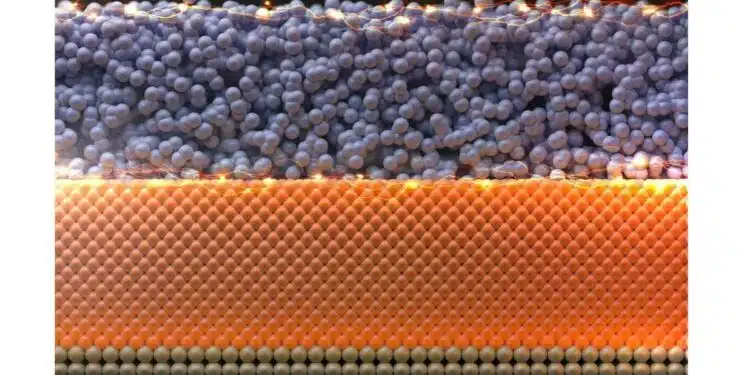Researchers at Stanford Engineering have achieved a significant breakthrough by developing an ultrathin material, niobium phosphide, that surpasses copper in conducting electricity across films just a few atoms thick.
This advancement could revolutionize nanoelectronics by enabling more energy-efficient and powerful devices.
The Challenge with Copper
As computer chips shrink, the metallic wires that transmit electrical signals become less efficient, particularly when reduced below 50 nanometers. Copper struggles to maintain electrical conduction at these dimensions, leading to power losses and inefficiencies in nanoscale electronics.
Niobium Phosphide: A Promising Alternative
Niobium phosphide, a topological semimetal, conducts electricity better than copper at thicknesses below 5 nanometers, even at room temperature. Unlike traditional metals, its conductivity improves as it becomes thinner. This unique property can significantly enhance the performance of high-density electronic devices.
Advantages Over Traditional Methods
Unlike other materials requiring high-temperature deposition to form precise crystalline structures, niobium phosphide films can be created at relatively low temperatures (400°C). This process is compatible with existing silicon-based technologies and avoids the need for perfect crystalline wires.
Future Implications and Research
While not ready to replace copper universally, niobium phosphide offers a compelling solution for the thinnest connections in chips. Researchers are exploring other topological semimetals to enhance its conductivity further.
Stanford’s team, including notable contributors such as Eric Pop, Yuri Suzuki, and Xiangjin Wu, continues to investigate how niobium phosphide and similar materials can improve energy efficiency in electronic devices. By developing narrow wires and testing real-world applications, they aim to address power challenges in current and future electronics.
Read the full paper here:
Asir Intisar Khan et al. ,Surface conduction and reduced electrical resistivity in ultrathin noncrystalline NbP semimetal.Science 387,62-67(2025).DOI:10.1126/science.adq7096































